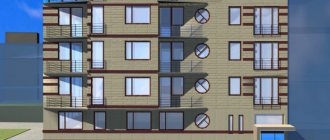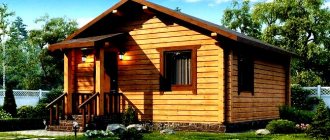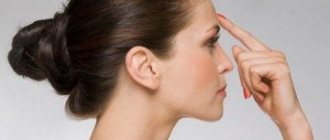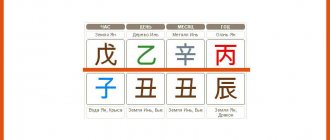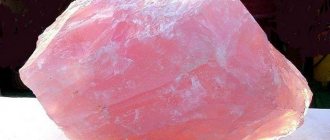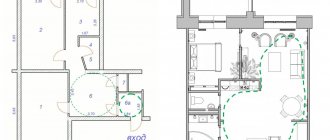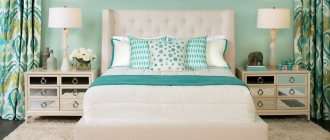Front façade: materials for decoration
In order to design the main view of the building, the following materials are used:
- stone;
- siding;
- panel;
- plaster;
- brick for cladding.
What is most commonly used
Stones are often used to finish the front side. You can use both natural and artificial stones. The most popular natural stones are:
Artificial stones are very popular. Architectural concrete is in particular demand. It is also called “white stone”. From “white stone” you can create decorative elements for windows and doors, as well as hanging panels.
Such a design can be quite long (several square meters). Moreover, the thickness of the “white stone” is small and is about 10 cm.
What is the back of the yard called?
Answers from forum users and experts to the question: What is the back part of the yard called?
If you are a manufacturer and you can’t find buyers or want to learn about the rear end of a cardan transmission for export, read it, you will learn a lot of new things.
The rear, in general, can be called a hacienda, a garden and whatever.
Answer or clarify the question
Popular questions
Good morning to you. I'm interested in the question about clasps for lining. Tell me, if it’s not a secret, what is this device? I'm thinking that we can.
One of the rooms in the apartment has a very uneven ceiling. Tell me how to level the ceiling yourself. I will be very grateful for the help of all who responded.
I still have a few weeks of vacation, so I decided to do something good. Please tell me how to dig a pond on the site with your own hands? Only if possible, describe everything in detail.
Drilled steel and hard plastic at an angle of about 20–25°. For some reason the drill overheated and failed. Maybe the cutting edges touched the surface being processed? .
Hello. I want to buy a house. I don't know how this is done. I would be happy with a new finished house, but I also need to know what area it is in. Building a house will suit me too. .
What is siding?
Siding is a material for cladding a building. The material is presented in the form of horizontally arranged panels. They are fastened together directly on the wall of the building. Siding is a very versatile and attractive cladding element:
- With the help of siding you can achieve variety in creating shapes.
- It is very easy to operate.
- It can be made from a wide variety of materials.
Types of siding
- Made from vinyl. Siding made from this material is quite strong, durable, and practical. The building becomes attractive due to the brilliant properties of the material.
- Made from polystyrene foam. The heat transfer of the building decreases. This is of great importance for buildings located in harsh climatic zones. The advantages of foam siding are also an increase in the vapor permeability of the building, moisture does not accumulate on the walls.
- Made of metal. It is the metal finishing that will add durability to the building and resistance to adverse environmental factors.
- Of steel.
- Made of wood. The main façade with such finishing looks aesthetically pleasing and provides excellent thermal protection for the building.
- Made from cement.
Thanks to all these advantages, siding is gradually replacing many of the listed materials (in particular, plaster).
Plaster, as a material for cladding the outer part of a building, is also used very often and tries not to lose its position. The following types of plaster have been developed: mineral, polymer, mosaic, structural, pebble.
The main side should look attractive, since it is the “face” of the building.
Building's facade
FACADE
(French façade, Italian facciata from faccia - “face, front side”)
in architecture
- a view of the external walls of a building at right angles, without angles: exactly from the front, side or back.
Facade
– (from Italian faccia – face) the outer side of a building or structure. Depending on the configuration of the building and its surroundings, there are: - main facade, - side facades, - street facade, - courtyard facade, - park facade, etc.
The proportions, tectonicity and decorativeness of the division of the facade are usually determined by the purpose of the structure, the features of its stylistic, spatial and constructive design.
Facade
- any external side of the building, regardless of the location of the main entrance and decoration elements. According to the architectural plan and the location of the building in the surrounding space, the facades are divided into main, rear, side, courtyard and others. This is the face of the building...
Facade
(French façade - front, front side of the building) - outer, front side of the building. Also called a facade is a drawing of an orthogonal projection of a building onto a vertical plane. The shapes, proportions, and decor of the facade are determined by the purpose of the architectural structure, its design features, and the stylistic solution of its architectural image. There are main, side, rear facades, as well as street and courtyard facades.
Facade
– the external vertical surface of a building or structure, formed by the external structure, horizontal and vertical divisions, the rhythm of openings (balconies, loggias), architectural details, the texture of building and finishing materials, color scheme, etc., depending on the type of structure and the shape of its plan, The locations distinguish between the main, side, and courtyard facades.
Facade
(French Façade, Italian Fronte) - the outer side, in the strict sense the front, the front side of the building, richer than others, decorated and in which the main entrance to it is located. The other sides of the building are called the rear, outer and side facades. The architectural division of the façade must correspond to the character of the building and be distinguished by the harmony of its lines. It is necessary that the facade, both in the horizontal and vertical directions, expresses the location of the internal premises of the building, designates its floors with more or less wide and protruding cornices, has a base at the bottom commensurate with its height, and at the top, at the transition to the roof, more more massive than the others, the “main” cornice. Significant surfaces of the F. wall should be enlivened with pilasters, niches, stucco work and other decorations in accordance with the general style of the building.
Images of the exterior of a building projected onto vertical planes are called facades
.
Translation of “Facade” from Russian into English:
m.
1) (external, front side of the building) facade [-'sɑːd], front
facades of shops - shop fronts
2) (external visibility) facade, disguise, (false) appearances pl
he hid fear behind a facade of confidence - he put up a facade of confidence to hide his fear
facade
[fə'sɑːd]
noun, fr.
1) facade (of a building) facade architecture - facade architecture, design of the front part of a building Synonym: front 2) external side (of a building, etc.), visibility
In accordance with current legislative standards, the front facade of the building
is the façade that is visible from the roadway.
The end of the building is: what does this expression mean and which syllable is emphasized
When faced with unknown terms, especially in such a specific industry as construction, people often want to understand and find out for themselves what they mean. This article will help answer the question; “this is the end of the building”?
The end of the building is the side part of each structure:
- residential building;
- warehouse;
- a barn where firewood is stored;
- production workshop;
- shopping pavilion;
- tire workshop.
Important! Most buildings are rectangular in shape. Two long sides are considered front, two side, short sides are end. Every literate person, even a schoolchild, knows perfectly well what a butt is. It is necessary to understand that the entrance from the end means: the entrance is located not on the front, long side, but on the short side.
What is also called the butt
The side elements of many pieces of furniture are called this word:
The sharp, protruding edges and long ends of many instruments have the same name:
- hammer;
- hacksaw;
- plane;
- chisel;
- drill;
- tap;
- broach.
This is the name of the sidewall of the following household electrical appliances:
All office supplies have them: pencils, erasers, ballpoint pens, and filler fountain pens. They are found in mobile phones, computer keyboards, monitors, system units, speakers, and many other items.
Types of end
All structures have side elements that are different in their configuration, purpose, and appearance. Each end of the house is original and unique in its own way and can be:
- Deaf. A wall without windows, doors, no columns, projections, or pilasters. Solid brickwork or log frame.
- Input. There is an entrance on the side and an entrance door is installed.
- Residential. The end section of the house has balconies and windows.
- Decorative. There is a multi-colored panel on it.
Attention! This is the name of the front, outer section of the structure. Usually it is located on the long side, where the central front entrance is made.
Lush columns are arranged around it, decorated with stucco and gilding, potted flowers are planted, and sculptures are installed. A park will be laid out in front of it, a fountain and a swimming pool will be installed.
There is a central and side façade.
Many buildings in Russia and around the world are majestic architectural ensembles that are designed as works of art.
At the ends of two ten-story residential buildings, adjacent to each other at corners, like an open book, in the middle of the city of Komsomolsk-on-Amur, artists created a painting. Now here is a life-size depiction of a warship sailing on the open sea.
The end face is a source of inspiration for many creators of world art. Paintings of gigantic proportions are called maral art.
They can be created in graffiti or street art style. First, a sketch is created and entered into the computer. Electronics project the picture onto the building.
The artist from the aerial platform traces the contours of the painting, marking where the color is.
Important! There are many restored buildings. The most popular portraits on Moscow houses: director Sergei Eisenstein in Vatin Lane, composer Alexander Scriabin near Paveletsky Station, Anna Akhmatova, Gilyarovsky Street, Mikhail Bulgakov, house number 33 of Bolshoy Afanasyevsky Lane on Arbat.
There are the following differences between the facade and the end of a building:
- The first is the main wall of the building, the second is the secondary wall.
- One is long, the other is short.
- The first is usually decorated, the second has more modest decoration.
- One, as a rule, has an entrance, porch, windows, doors, the other, in many cases, is blind.
- Sometimes there are exceptions to these rules.
After reading the article, readers learned what “from the end of the building” means. Many people ask questions from the end of the building - this is how.
Now we have an idea of what it is, where it is located, why it is called that, what other elements of houses there are.
To speak correctly, you need to know where the stress is placed in the word butt. The second syllable is stressed, that is, the stress must be placed on the letter E.
on topic: beautiful house facade
Sokolova Maria Gennadievna Loading…
Additional classification
Today, the division of this building material into the following types is known:
- ventilated options;
- non-ventilated options.
The technology of ventilated systems is based on the formation of a gap for ventilation, which is located between the wall and the facade material.
Air begins to circulate freely in the gap, thanks to which moisture and dampness evaporate. And the material itself qualitatively protects the floors of premises from all kinds of atmospheric influences.
What is the side of the building: (definitions are given in the nominative case)
Making the Word Map better together
Hello! My name is Lampobot, I am a computer program that helps you make Word Maps. I can count perfectly, but I still don’t understand very well how your world works. Help me figure it out!
Thank you!
I will definitely learn to distinguish widely used words from highly specialized ones.
smoke
(verb)
is clear : smoked:
Associations to the word “side”
Associations to the word “building”
Synonyms for the phrase “side of the building”
Sentences containing the phrase “side of the building”
- Mom covered the wound with her hand, trying to stop the pulsating dark blood, and Tato ran to the pharmacy opposite in the hope of reaching the pharmacist, who lived with his family in the rooms on the back side of the building
.
Quotes from Russian classics with the phrase “side of the building”
- In the middle of the courtyard stood the main idol - a rather spacious building, open on all sides, under three or four roofs, all with curved corners.
Meaning of the word "side"
SIDE, -y, wine.
side,
plural
sides, –ron, –am,
w.
1. Space, place located in some place.
direction from something, as well as this direction itself. Sides of the horizon.
From the field side. Towards the forest. Go in different directions. (Small Academic Dictionary, MAS)
The meaning of the word "building"
BUILDING, -i, cf.
Structure, architectural structure, construction (usually large in size).
New building.
High building. (Small Academic Dictionary, MAS)
Submit Comment
Additionally
Meaning of the word "side"
SIDE, -y, wine.
side,
plural
sides, –ron, –am,
w.
1. Space, place located in some place.
direction from something, as well as this direction itself. Sides of the horizon.
From the field side. Towards the forest. Go in different directions. The meaning of the word "building"
BUILDING, -i, cf.
Structure, architectural structure, construction (usually large in size).
New building.
High building. Sentences containing the phrase “side of the building”
Mom covered the wound with her hand, trying to stop the pulsating dark blood, and Tato ran to the pharmacy opposite in the hope of reaching the pharmacist, who lived with his family in the rooms on the back side of the building
.
The groups were located on both sides of the building
so that when you look into the central middle corridor, it seems that there is no end to them.
They tolerate very well the proximity to the chimney, and coniferous trees located on the north side of the building
, will prevent wind squalls and thereby further protect the area of the chimney.
Varieties
The front side of the building is called the facade; it is where guests are greeted. But it should be borne in mind that other sides of the building are also facades. However, they are not front, but side, back, and so on. All of them are divided by design features:
- Stone, brick.
- Concrete, monolithic.
- Translucent.
- Hinged ventilated structures. They differ in cladding. The cladding can be made of: porcelain stoneware, aluminum panels, fiber cement, metal cassettes, siding, blockhouse, decorative boards, stainless steel.
- Media façade. This is the most modern version of the front side of the building. In this case, screens are installed. Together, these screens form a video image. As a result, the front side of the building looks like one large screen. It looks very fashionable and modern.
To beautifully decorate the main side, some professionals advise using stucco and tiles. You can use ordinary plaster or paint.
How to spell it: from the end or from the side?
When pronouncing the word (c) butt, it seems that it is one single word. And when you look at various proposals, you already see two options: from the end, from the end. In this regard, the question arises, which option is correct.
Therefore, let's figure out how to correctly spell the word (from) end: together or separately.
A merged spelling would be possible provided that the desired word was an adverbial combination, so it is necessary to determine its part of speech.
In the Russian language there is a noun butt, which is used to mean: a cross section of a log, beam, board, etc. When adding “s”, it does not become an adverbial combination, but remains a noun in the genitive case with the preposition “s”, which is naturally written separately.
Correct answer: from the end.
The entrance to the hospital is at the end of the building.
It was not possible to enter from the end, since the door was tightly locked.
We decided to walk around the building to enter it from the end.
Source of the article: https://portalonline.ru/russkij-yazyk/2402-kak-pishetsya-s-torca-ili-storca.html
Half-timbered column
In one-story industrial buildings, in addition to the main frame, an additional – half-timbered – wall frame is used. The half-timbered structures are installed in the planes of the longitudinal and end walls.
Half-timbering is necessary when there is a large distance between the uprights of the main frame. Half-timbered columns provide stability to the walls and provide hanging crossbars for fastening wall panels.
Reinforced concrete columns of the end frame
Half-timbered columns are installed, most often, in 6m increments. The upper part of the column is fixed at the floor level with flexible ties. The half-timbered columns are installed on their own foundation.
Gates. Gates are classified according to their purpose, by the number of leaves (single and double-leaf, multi-leaf), by the method of opening the doors (hinged, sliding, lifting, curtain).
Swing gates have the simplest design and are widely used. The width of swing gates is taken to be no more than 4.7 m.
Sliding gates are used when openings are large and there is no space to open swing gates.
Metal half-timbers
Gate leaves are made with a top hinge, i.e. with rollers resting on a rail located at the top of the opening.
Lifting gates occupy a minimal area when opening, but their design is much more complex in terms of mechanical devices and structures.
Ticket 13. Planar spacer systems for the load-bearing frame of a one-story long-span building: examples, features, approximate ratios of cross-sectional parameters of load-bearing elements to spans, ensuring rigidity.
In spacer structures of coverings on supports, in addition to vertical reactions, under the influence of the structure’s own mass, horizontal reactions called expansion also occur.
The main spacer structures are arches and frames.
Frames can be of various shapes, but most often U-shaped frames are used in construction.
Arches are most often designed with a circular outline (since such arches are simply made in either monolithic or prefabricated versions); arches can also be parabolic, elliptical, or based on curves consisting of different radii.
There are frames and arches:
1. Hinged (designed only on reliable foundations, since they are especially sensitive to uneven soil settlement)
2. Double-hinged - with a hinged support on the foundation (less sensitive to uneven precipitation, but the expansion, compared to hingeless ones, is greater)
3. Three-hinged - hinged support on supports + hinge in the middle of the span (even less sensitive to uneven settlements, but the expansion is greater than that of double-hinged and hingeless ones)
The advantage of two and three-hinged frames and arches is that they can be made in advance from two identical parts and mounted by simply connecting the hinges.
Arches and Frames (circular and U-shaped) have a constant cross-section only in the hingeless version; in the presence of hinges, the height of the section is reduced by 2.3 times at the hinges (see Table)
Expansion structures require a special type of foundation: the greater the expansion, the more the foundation must be developed outward.
Ways to perceive (reduce) thrust:
1. cantilever extensions located in continuation of the crossbars and loaded accordingly - with this solution you can almost completely get rid of the thrust and design the foundations as for a conventional non-thrust structure.
2. Tie-downs - the lack of thrust of the arch can be completely achieved by connecting its supports with a metal tie, which is usually located below the floor level
Arches and frames have sufficient rigidity in their plane; in the other direction, the rigidity of the entire system as a whole is ensured by the inclusion of connections in each longitudinal row of vertical supports.
Horizontal connections are arranged in the transverse direction at the beginning and end of the temperature compartment. In curved arches, rigidity is achieved by embedding covering slabs of a curved outline.
Also, a vault can be classified as a spacer covering structure - as a type of arch of large width.
The simplest design is a smooth cylindrical vault. Resting along the entire length on the foundation, a more progressive type of cylindrical vault is ribbed.
Load-bearing elements of a ribbed vault: arches and longitudinal ribs, which are connections; the same type of reinforced concrete slabs are installed between the ribs
By combining cylindrical vaults, you can get a closed vault, a multifaceted dome, or a cross vault.
The following methods of repaying the thrust are possible:
1. Buttresses
2. Tightenings 14. Frame structures of one-story industrial buildings: structural diagrams, materials, sections of elements, ensuring stability.
Frame schemes of the load-bearing frame are formed by vertical load-bearing elements, which, in turn, support the load-bearing elements of the covering - the frame crossbars.
Depending on the functional purpose of the building, the materials of the main supporting structures and the structural system, the frames have a rigid or hinged connection of horizontal elements with vertical ones.
The most common design solution for one-story industrial buildings is a diagram (Fig. II.2, b) with a hinged connection of the frame crossbar and columns and rigid embedding of the columns in the foundations (double-hinged system).
Other schemes for the transverse load-bearing structure of a building, for example, a two-hinged scheme with hinges at the point where the columns rest on the foundations (Fig. II.2, c) or a three-hinged scheme (Fig. II.2, a), are used less frequently. Rigid connection of the frame crossbar with the columns - a hingeless scheme (Fig. II.
2, d) - used mainly in all-metal frames.
The frames of one-story industrial buildings can be made of reinforced concrete, metal and wood.
Predominant use is made of reinforced concrete frames, in which, for spans up to 18 m inclusive, it is advisable to use gable reinforced concrete beams of T- and I-beams as cross-sections, and for spans of 24, 30 and 36 m - trusses of segmental, trapezoidal shape and with parallel chords. Reinforced concrete frames with rigid joints are used for spans up to 48 m, and rarely due to their complexity, and they are not more economical than hinged ones. The height of the cross-section of the frame crossbar is taken to be equal to 1/20-1/25 of the span, the height of the cross-section of the rack at the place where it adjoins the crossbar is the same or slightly smaller. It is advisable to adopt I-sections for the crossbar and rack. For ease of transportation, the reinforced concrete frame is divided into several elements during manufacturing. The joints of the elements are arranged either at the junction of the crossbar with the racks (Fig. II.72, a), or at places of zero bending moments from a constant load (Fig. II.72, b). use of steel frames.
For spans of more than 18 m, the crossbars are designed end-to-end in the form of trusses in order to save materials.
With heavy loads and significant spans, as well as with overhead cranes with a large lifting capacity, you should switch to metal spans
